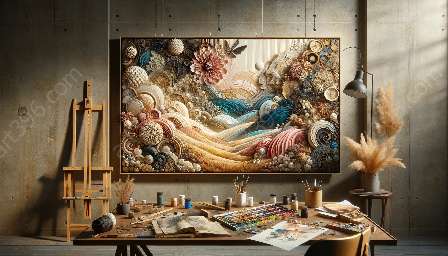Introduction to Mixed Media Art Therapy
Mixed media art therapy is a form of expressive therapy that uses a combination of artistic materials and techniques to help individuals communicate, express themselves, and explore emotions. This therapy is particularly impactful for individuals with disabilities, as it provides a unique outlet for self-expression and creativity.
Benefits of Mixed Media Art Therapy for Individuals with Disabilities
1. Enhances Self-Expression: Mixed media art therapy offers a non-verbal way for individuals with disabilities to express their thoughts, emotions, and experiences. Through the use of various artistic materials such as paint, collage, and found objects, individuals can communicate in a way that may be difficult through traditional verbal methods.
2. Cultivates Creativity: Engaging in mixed media art therapy encourages individuals with disabilities to think creatively, problem-solve, and experiment with different artistic techniques. It provides a safe space for exploration and allows individuals to develop their artistic abilities.
3. Promotes Emotional Healing: Creating art through mixed media therapy can facilitate emotional healing for individuals with disabilities. By processing their experiences and expressing their feelings through art, individuals may experience a sense of relief, validation, and empowerment.
Techniques and Practices in Mixed Media Art Therapy
1. Collage: Collage involves the use of various materials such as paper, fabric, and found objects to create images and narratives. This technique allows individuals to mix and layer different materials to convey their thoughts and emotions.
2. Painting and Drawing: Painting and drawing are fundamental techniques in mixed media art therapy. Individuals can use a variety of painting and drawing materials to communicate their inner experiences and sensations.
3. Assemblage: Assemblage involves creating three-dimensional artworks by combining found objects, creating a tactile and interactive experience for individuals with disabilities.
Case Studies and Success Stories
Several case studies have demonstrated the positive impact of mixed media art therapy on individuals with disabilities. For example, a study documented the experiences of individuals with autism spectrum disorder participating in mixed media art therapy, showing significant improvements in communication skills and emotional regulation.
Conclusion
Mixed media art therapy offers a valuable means for individuals with disabilities to express themselves, foster creativity, and achieve emotional well-being. By incorporating a variety of artistic techniques and materials, mixed media art therapy provides a positive and enriching experience for individuals with disabilities.

